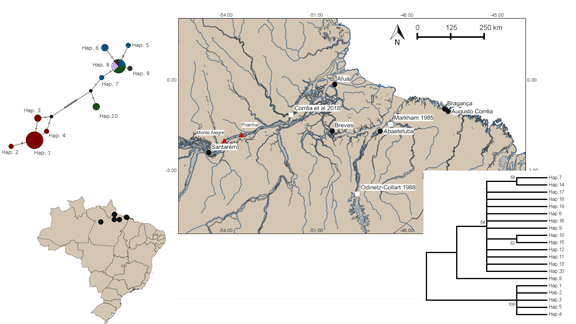Published online by Cambridge University Press: 28 September 2021

Bopyrid isopods of the genus Probopyrus are well-known parasites of freshwater prawns of the genus Macrobrachium. The parasitism of coastal populations of Macrobrachium amazonicum by Probopyrus bithynis, for example, has been documented since the late 1980s. Despite this, molecular data on different populations are not available for any Probopyrus species. The present study is the first to describe Probopyrus populations from distinct regions of the Amazon basin based on sequences of two genes, the mitochondrial cytochrome oxidase C subunit I (COI) and the nuclear 18S ribosomal DNA (18S rDNA) gene. The analyses indicated the presence of two Probopyrus species, each parasitizing either the coastal or the inland populations of M. amazonicum. The results indicated the potential use of the COI barcode for the identification of Probopyrus species. We discuss the potential implications of the findings for the taxonomy of Probopyrus bithynis and other species of the genus Probopyrus.